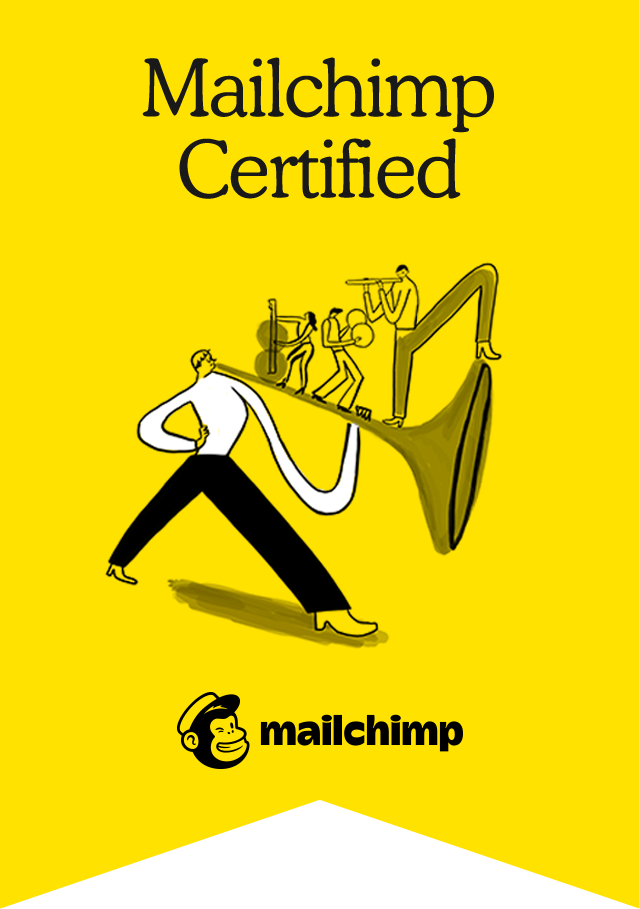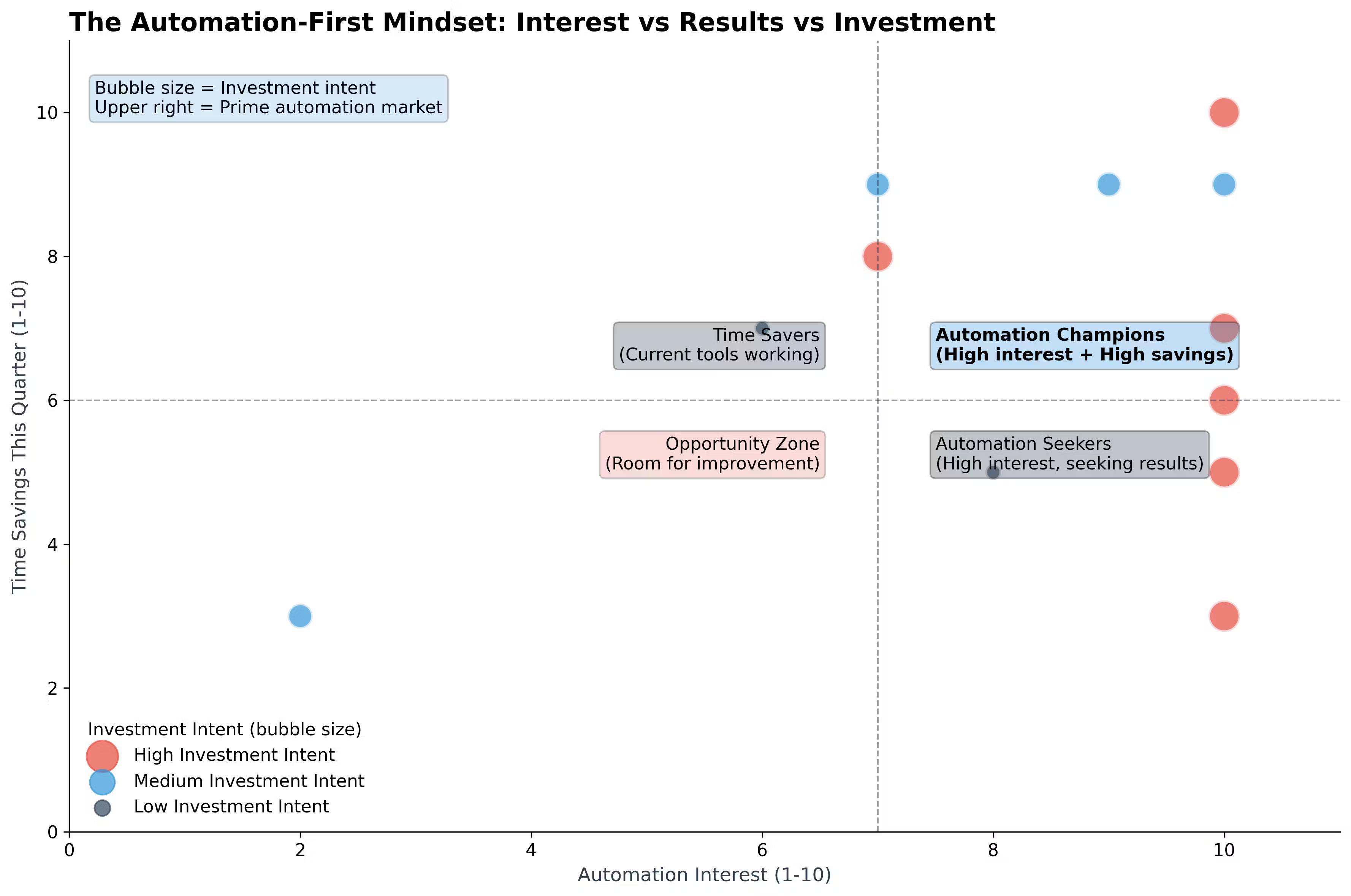
Q2 2025 Tech Trends: How are small businesses using AI and Technology?

What UK small business owners told us about AI, automation, and where they’re heading next.
We talk to small business owners every week. Most don’t want a deep dive into the latest Silicon Valley launch, they want to know what’s working, what’s worth trying, and what others like them are actually doing with tech.
So this quarter, we asked them.
Between May and early June, UK-based small business owners filled out our quick tech survey. The results? Encouraging, surprising in places, and full of useful signals. Here’s what we learned.
Confidence is growing, but not sky-high
We asked: “How confident do you feel using technology in your business?” The average score was 6.8 out of 10.
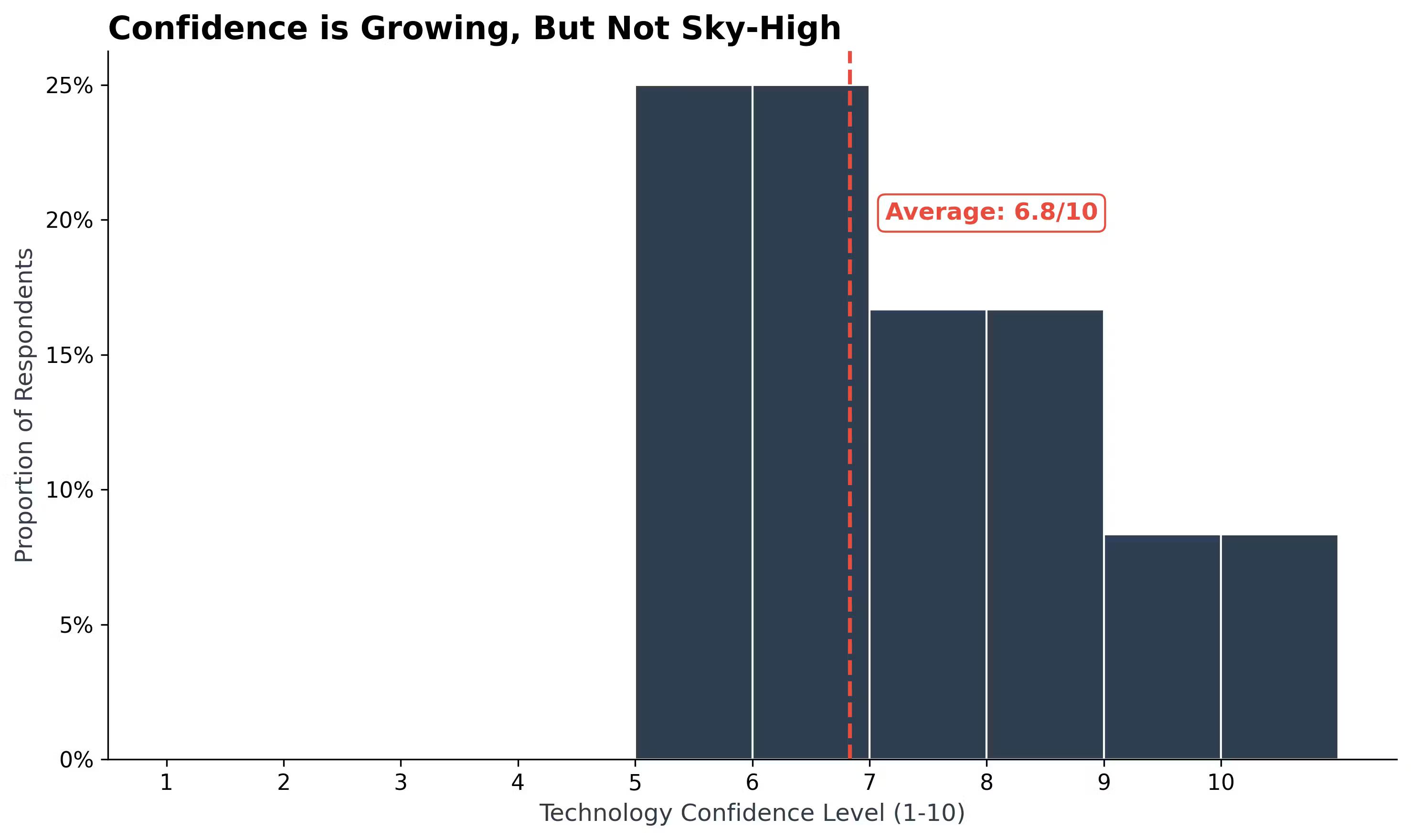
Most respondents feel pretty capable, but also aware there’s more they could do. One person put it nicely:
“I know enough to get by, but I still get overwhelmed by new tools or conflicting advice.”
That reflects what we hear often in client conversations. You’re not totally lost, but you’re also not sure whether you’re missing out on something better, cheaper, or more efficient.
It’s the same story when we asked whether their current tools meet their needs — the average was 7 out of 10. So, decent — but with plenty of room to improve.
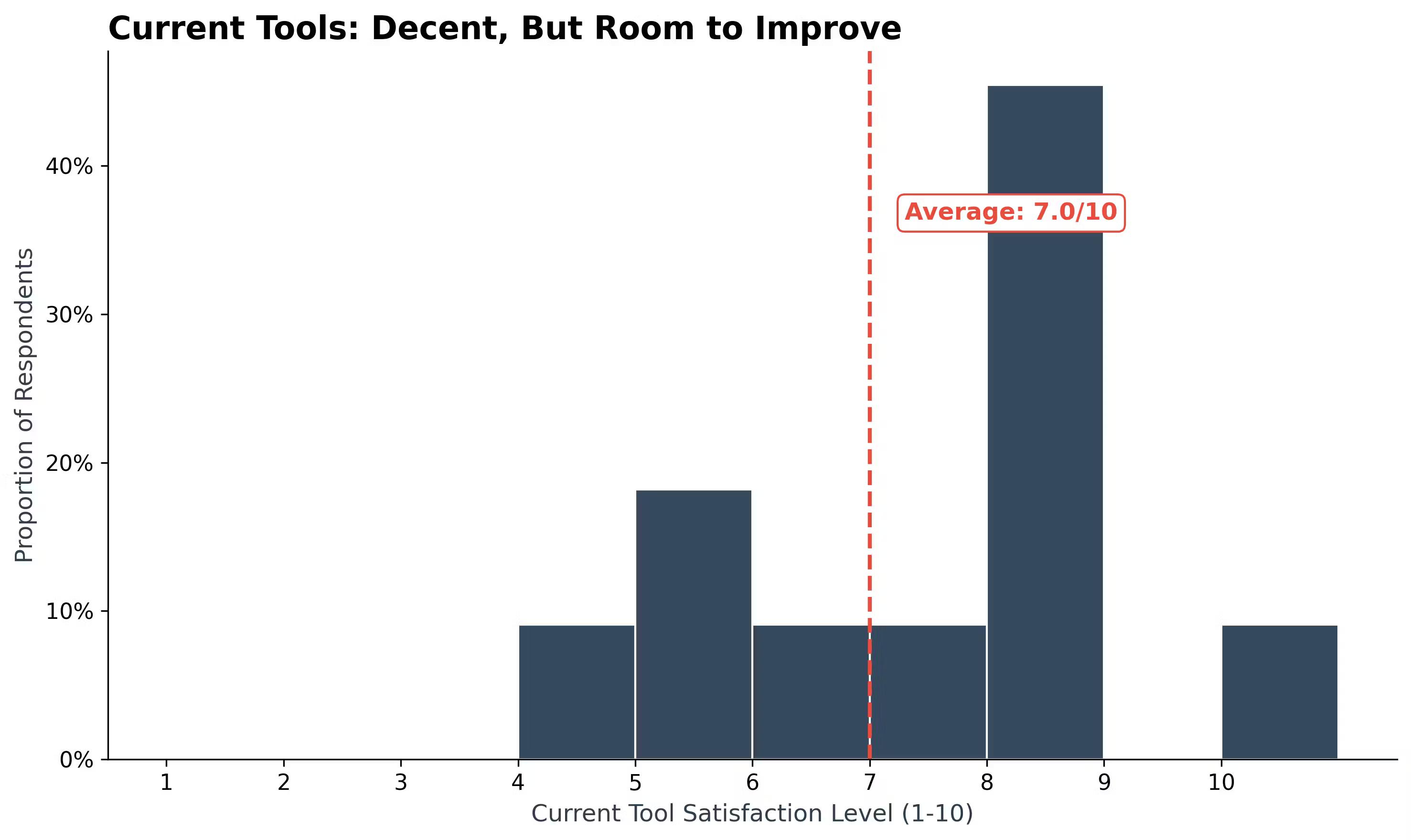
✅ What this means for you: If you’re feeling a bit behind or unsure, you’re not alone. That’s not a problem. Most business owners are figuring it out as they go, often without an internal IT team or much time to spare.
The key is to focus on making small, well-considered improvements over time. Not chasing trends or doing everything at once. That might mean switching one clunky tool for something simpler. Or getting clarity on where your systems are holding you back before you invest in anything new.
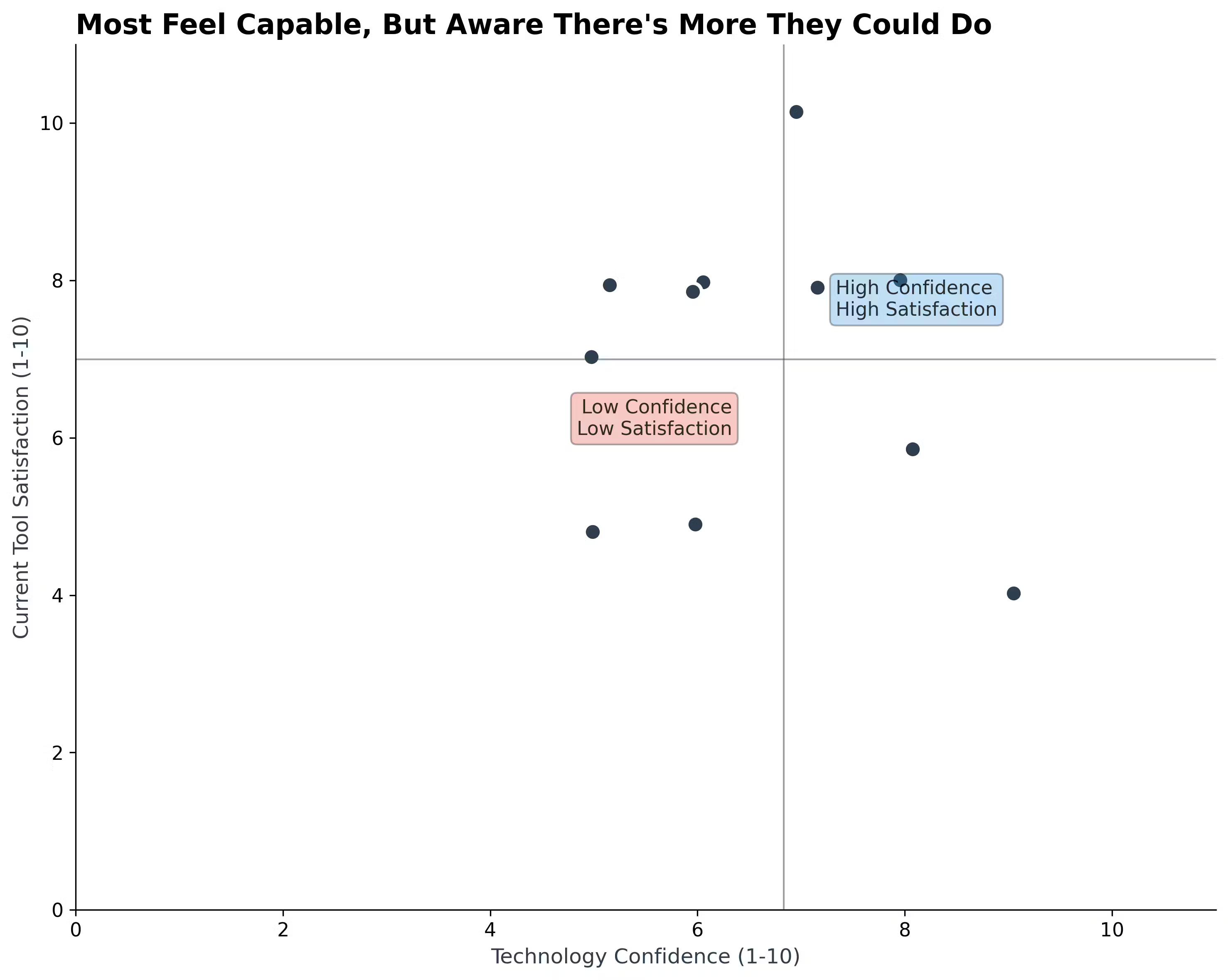
🎯 Try this: Pick one area of your business that feels slow, messy, or manual. Then ask: Is there a simpler way to do this? That single question is often the start of real progress.
AI is no longer new, but clarity is still missing
Half our respondents regularly use one or two AI tools, such as ChatGPT for content creation or Grammarly for writing. Yet when asked if they knew clearly which AI tools were relevant to their business, the average score was just 4.7/10.

But when we asked “Do you feel confident knowing which AI tools are relevant for your business?”, the average score dropped to just 4.7/10.
In other words: people are experimenting, but still unsure what’s useful vs. what’s noise.
✅ What this means for you: Instead of exploring every new AI product, zero in on tools that directly tackle everyday tasks, like drafting emails, creating marketing copy, or summarising meeting notes.
Automation is the clear productivity winner
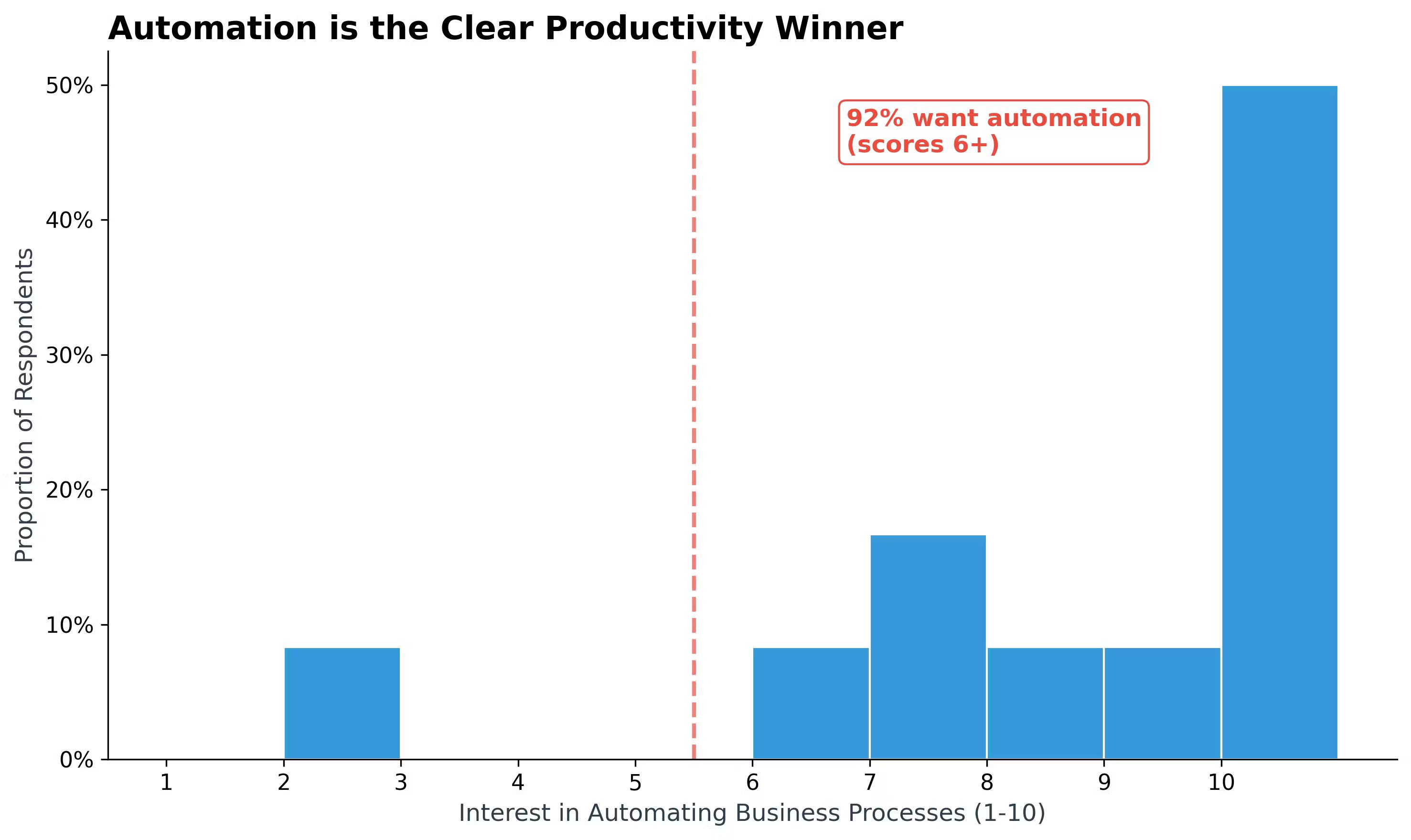
An impressive 83% said they want to automate at least one core business process, including:
- Quotes turning automatically into invoices
- Reposting social media content
- Cleaning up data from sales and customer forms
- Streamlining payment and fulfilment processes
One small retailer we spoke to automated their invoicing process and reclaimed five hours each week. Even small automation steps save considerable time and energy. Automation isn't just efficiency, it's freedom to focus on growing your business.
🎯 Quick win: Start by automating a simple, repetitive task, such as syncing customer contacts between your CRM and email marketing tools (Zapier is great for this). Talk to us about helping implement this.
Our most revealing finding emerged when we mapped three critical dimensions together: automation interest, time savings achieved, and investment plans. This multi-dimensional analysis reveals distinct business mindsets that go far beyond simple survey responses.
The Automation-First Mindset: Where Interest, Impact, and Investment Align
Our most revealing finding emerged when we mapped three critical dimensions together: automation interest, time savings achieved, and investment plans. This multi-dimensional analysis reveals distinct business mindsets that go far beyond simple survey responses.

The bubble chart shows four distinct segments:
- The Automation Champions (Large bubbles, top-right): High automation interest + strong time savings + major investment plans. These businesses have tasted success and are doubling down. They represent the future of small business efficiency.
- The Cautious Optimists (Medium bubbles, center): Moderate automation interest with some time savings but limited investment appetite. They're seeing benefits but haven't committed to scaling up yet.
- The Early Explorers (Small bubbles, scattered): These businesses are testing the waters with automation but haven't yet connected it to significant time savings or investment strategies.
- The Untapped Potential (Various positions, lower investment): Businesses showing interest and even some time savings, but not yet ready to invest heavily. This represents the largest opportunity for education and support.
What's particularly striking is that time savings and automation interest don't always predict investment plans. Some businesses achieving good results remain hesitant to invest further—often due to complexity concerns or unclear next steps rather than lack of results.
What this pattern reveals: The automation-first mindset isn't just about technology—it's about connecting efficiency gains to business growth strategy. The most successful adopters treat automation as an investment in capacity, not just a cost-saving measure.
🎯 If you recognise your business in this analysis:
- Automation Champions: Focus on scaling what's working and sharing your success stories
- Cautious Optimists: Consider one bigger automation project to unlock the next level of benefits
- Early Explorers: Document your time savings to build confidence for larger investments-
- Untapped Potential: Start with one simple automation and track the impact closely
Search is changing; your content should too
In May, Google rolled out its new AI Overviews in the UK. These show up as conversational summaries at the top of search results, and they’re changing how people find (and trust) answers.
Pages that clearly and concisely answer whole questions are being pulled into these summaries more often.
✅ What this means for you: Take a look at your core service pages or FAQs. Could they be rewritten in a clearer, more answer-driven format? Think bullet points, plain English, and real-world language — not SEO fluff.
Regulations are starting to bite
There are two areas to be aware of this quarter:
- AI compliance: The EU AI Act has started rolling out, with stricter rules arriving in August. If you’re using AI tools in customer-facing content or decisions, it’s worth keeping a record of what you’re using and how.
- Accessibility rules: From 28 June, the European Accessibility Act applies to all new digital products and services in the EU. If you’re launching a new site or app, it needs to meet basic accessibility standards.
✅ What this means for you: Start an AI usage log now (just a simple spreadsheet will do). And if you're launching anything new online, run a quick accessibility check.
Final word
There’s a lot of noise out there. Here’s the reality, based on our survey and daily conversations with small business owners:
👉 You don’t need to do everything.
👉 Just start with something useful, practical, and manageable. Then build from there.
If you’re unsure what that first step should be, we're here to help with a friendly, no-pressure chat. Whether it’s a quick website audit, an automation idea, or figuring out if AI could really help your business, we’ll give you honest, clear advice.
Book your free 30-minute consult here. Let’s find out what's truly worth doing, and what's not.




